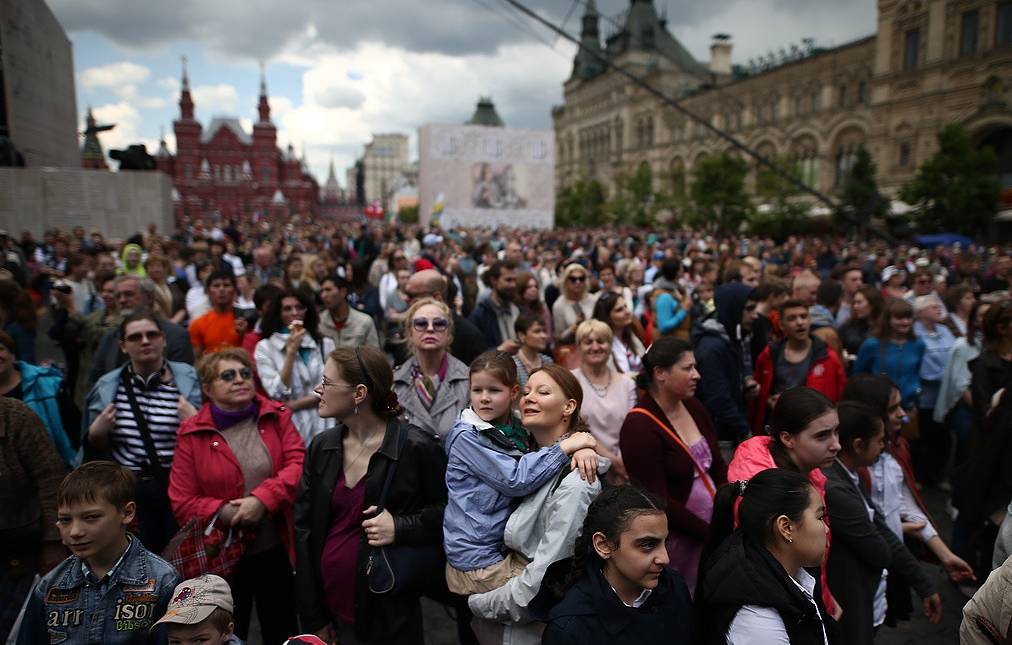The natural population decline in Russia in 2021 for the first time in history reached a million people and, according to preliminary data, amounted to 1.04 million. This is evidenced by preliminary data from Rosstat.
As of January 1, 2022, the permanent population of Russia amounted to 145.478 million people, having decreased by almost 693 thousand people over the year, the agency reported. The data are given taking into account the annexed Crimea.
Without it, Russia’s population has fallen to the level of 2012, amounting to 143.06 million people. The last time the population declined so rapidly was in 2002, when the decline was 686,000.
An RBC expert told the publication that the reason for such a sharp decline is “supermortality from COVID-19”. Since the beginning of the pandemic, more than a million people have died from the coronavirus and its consequences, independent experts estimate. The authorities recognize 626 thousand dead from April 2020 to November 2021.
Population dynamics is made up of natural increase/decrease (number of births minus number of deaths) and net inflow/outflow of international migrants. Rosstat separately reported on January 28 that the natural population decline in 2021, according to preliminary data, reached 1.04 million people. The previous maximum in modern Russia was set in 2000 – minus 958.5 thousand. In June 2021, Rosstat, summing up the final demographic results, reported that the natural decline in 2020 amounted to 702 thousand people.
The death rate in 2021 increased by 15.1%, to 2.44 million people, while the birth rate decreased by 2.3% to 1.4 million people, the lowest since 2002. The birth rate in Russia has been declining since 2014, although the pace of this decline is slowing down. It follows from the above data that the migration inflow for the year amounted to about 350 thousand people.
In March, according to tradition, Rosstat will refine the estimate of the resident population. And the most relevant data on the number of inhabitants of Russia will become known by April – according to the results of the nationwide census, which took place in the fall of 2021, 11 years after the previous one, Pavel Malkov, head of Rosstat, said on January 17.
After World War II, the demography of Russia within the USSR was characterized by stable natural population growth until the late 1980s. This was partly due to the consequences of the war: those who should have died of natural causes in the late Soviet years died “in advance”, said the famous Russian demographer Anatoly Vishnevsky.
Increasing migration inflow
The Statistical Service did not publish separate data on the migration component for 2021, but, based on the given figures for the reduction in the number, the migration gain (the number of arrivals minus the number of departures) in January-December amounted to almost 350 thousand people. This means that the migration inflow compensated for the natural loss by about a third.
The results of the census become the foundation for estimating the population, and in the intervals between censuses, the resident population is recalculated based on the data of the registry office system on birth / death and migration registration, the director of the Institute of Demography named after A.G. Vishnevsky National Research University Higher School of Economics Mikhail Denisenko. Rosstat receives data on migration from the territorial bodies of the Ministry of Internal Affairs, their reliability is worse than that of data on the vital movement of the population. If there is a deterioration in the quality of migration registration, this upsets the balance of demographic calculations, Denisenko notes. “Yes, the farther from the census, the less accurate estimates. But there is no other way. This is a standard world practice,” Professor Irina Kalabikhina, head of the Department of Population at the Faculty of Economics of Moscow State University, told RBC.
Based on preliminary data from Rosstat, net international migration to Russia increased 3.3 times in 2021, to almost 350,000 people (compared to 106,500 in 2020). This happened as a result of an increase in the number of arrivals in Russia, especially from the CIS countries (Tajikistan, Kyrgyzstan, Armenia, etc.), and a decrease in the number of those who left the country.












